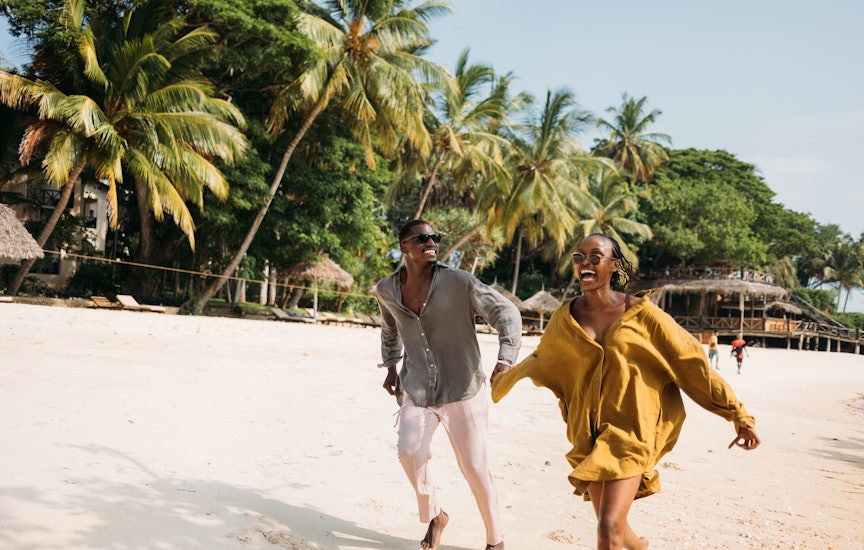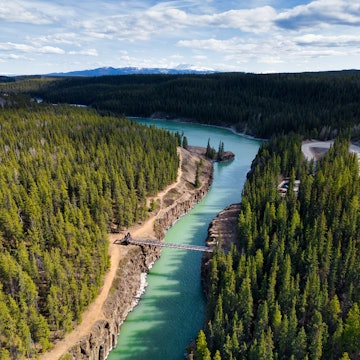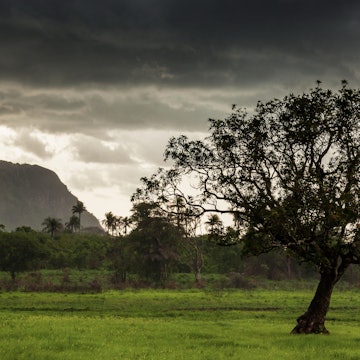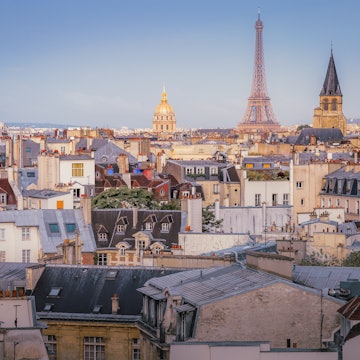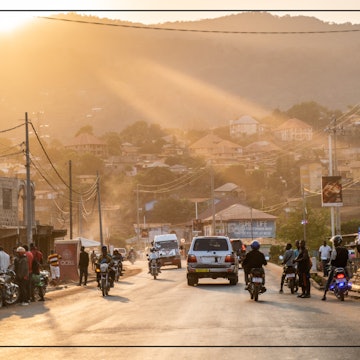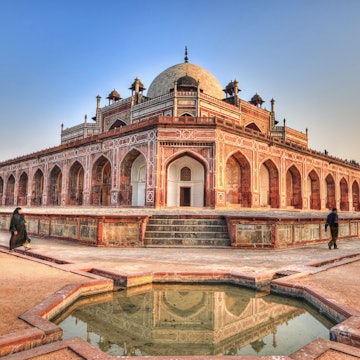

Sierra Leone has a painful history – but its people know how to celebrate life. robertonencini/Shutterstock
From its beautiful ocean vistas to its tropical islands, vibrant creative arts scene and rich, complex history, Sierra Leone is an unforgettable place to visit. So much so that many travelers who come here end up returning again and again, forging a lasting bond with the country.
Here are eight things you should know ahead of your trip to Sierra Leone.
1. Most visitors need a visa
Unless you’re a citizen of one of the Economic Community of West African States (ECOWAS) countries, you’ll need a visa to visit Sierra Leone. You can procure a visa on arrival after touching down for US$80; citizens of 16 countries, including Singapore, Jamaica and Kenya, get their visas for free. Single-entry visas are valid for visits up to 30 days, while multiple-entry visas allow for several trips up to a maximum of 30 days per visit. Travelers flying in or out must also pay a US$25 arrival-and-departure security tax.
2. You’ll need a yellow fever certificate and malaria prophylaxis
Like most African countries, Sierra Leone requires visitors to show a certificate attesting to a yellow fever vaccine, whether you’re entering the country by air or by land. Malaria prophylaxis is also a good idea: there is a high rate of the disease in Sierra Leone, especially during the rainy season, when mosquitos abound. Although most locals don’t take prophylaxis, it’s important that visitors from non-malaria endemic countries do – we have known many travelers and expats to become dangerously ill from malaria due to a lack of past exposure. If you do experience symptoms while there, visit a local health center for a blood test and treatment, which are easy to access. Most pharmacies also stock test kits and prophylaxis.

3. Transfer to and from Freetown Airport is by speedboat
Forget traffic jams. Travelers flying in and out of Freetown International Airport get to travel in style: by speedboat. Once you pass security and customs, you’ll grab your bags and head straight to the dock, where you board a speedboat for the exhilarating 30-minute journey to Freetown. This final transfer is the highlight of getting to Sierra Leone, and easily one of the best ways to arrive anywhere in the world. Two companies, SeaBird Express and Sea Coach Express, offer this journey (US$45), and you can purchase your ticket on arrival. Prefer slower travel? A ferry departs from Tagrin, a town 9 miles (14km) from the airport.
4. A few words of Krio will go a long way
English is the official language of Sierra Leone, but in daily life most people speak Krio, especially in Freetown. This vibrant, rhythmic language is one many travelers fall in love with. As you travel around, you’ll be met with warm greetings like “how di bodi?” (“how are you?”). The language combines elements of English, Yoruba and other West African languages, and dates back to the birth of the country as we know it today. (Freed Africans who had been enlisted to fight for the British in the American War of Independence were sent to Canada, and on to West Africa, where they established the city of Freetown.) Although most people in Freetown also speak English, learning a few words of Krio before you travel will lead to stronger social connections. In the provinces, you’ll encounter many other languages such as Mende and Temne. In total, Sierra Leoneans speak some 23 living languages.

5. Take care on the roads – and look out for your valuables
As of 2025, Sierra Leone’s political climate is largely stable, and the country has been Ebola-free for eight years. Accordingly, the biggest dangers you will likely encounter today are petty theft and road accidents. In Freetown, you can get around by shared taxi (these typically run on fixed routes), private taxi, rideshare apps, kehkehs (also known as tuk-tuks), poda podas (shared minibuses) or okadas (motorbike taxis). Hailing an okada on the street is not recommended due to the high accident rate; speeding is common among many drivers, as is drunk driving. If you must take an okada, ask for a recommendation for a driver from someone you trust – and, crucially, a passenger helmet.
Keep in mind that petty theft does happen, sometimes while walking in the street, so look out for your valuables and avoid walking at night.
6. Sierra Leone is home to one of the last stretches of ancient rainforest in West Africa
The Upper Guinea Rainforest once covered almost all of tropical West Africa, spanning six countries. It’s now one of the most critically endangered forests in the world. Due to deforestation, conflict and unsustainable resource use, just 30 percent remains today.
Situated along the Moa River, Tiwai Island is one of the last complete pieces of this ancient lowland rainforest, along with Gola Rainforest National Park near Kenema. Despite its name, which means “big island” in the Mende language, Tiwai is a tiny island of just 4⅔ sq miles (12 sq km). Yet it is the kind of place that visitors still talk about years later.
This beautiful, pristine sanctuary is rich in biodiversity and home to Sierra Leone’s highest concentration of primates and other animals, including western chimpanzees, black-and-white Diana monkeys, bush babies and 135 bird species. Its humid, wet climate provides the perfect habitat for the elusive pygmy hippo, although sightings are rare since the species is so shy. Other wildlife includes forest elephants, otters, sea turtles and over 700 plant species.
You can reach Tiwai by speedboat or dugout canoe from nearby Kambama village. Accommodation is basic: the island is set up for camping, or you can sleep in simple rooms at the visitor center. Groups are assigned a local guide who will take you on night walks under the stars, dugout canoe walks and beach hikes. For independent exploration, a few self-guided trails wind through the island’s dense forests.

7. Sierra Leone has a large chimpanzee population
Sierra Leone is home to a large population of western chimpanzees (among West African countries, only Guinea and Liberia have more). Still, the primates are endangered, and the population has declined at an alarming rate, from 20,000 in the 1970s to about 5500 today. They remain under threat from disappearing habitat, the impact of past conflicts, economic instability, hunting, the pet trade, the historic sale of chimps to scientific research labs and the consumption of bushmeat.
At the forefront of vital community-outreach efforts to save the chimps is Tacugama Chimpanzee Sanctuary, a 100-acre refuge that is dedicated to preventing the extinction of wild chimpanzees – with their very survival hanging in the balance. Many of its residents are chimpanzee orphans, survivors of deforestation or rescues from the pet trade. The chimps you’ll see here live in different groups and all have names (including Ramba, Kabala, Rasta and Sarah, among many, many others). Daily tours take you through the forest to spot them or serve them supper, along trails visited by stunning butterflies and birds.
Outamba-Kilimi National Park is another focus of conservation efforts by the Sierra Leonean government, which is working to restore biodiversity impacted by recent deforestation. You might spot some of their initiatives on a visit here, including camera traps, fire belts to prevent wildfires and conservation-education-outreach efforts in nearby communities.

8. The country has a painful past – and some scars remain…
From the era of slavery to civil war and Ebola, Sierra Leone has suffered more than its fair share. Beginning in the 1500s, Portuguese slave traders kidnapped and forced people through the Door of No Return on Bunce Island, 19 miles (30km) down the river from Freetown. This small island later became a major station for enslavers under British colonialism, with more than 30,000 trafficked to the Americas. Today, with its overgrown wilderness and castle ruins, the island is now a site of remembrance and a painful place to visit, especially for those who have traced their family ancestry back to Sierra Leone.
From 1991 until 2002, the Sierra Leone Civil War was a devastating conflict that killed more than 50,000 people and injured countless more. The conflict was initiated by the Revolutionary United Front (RUF), a rebel group with a reputation for murder, rape, mutilation and recruiting child soldiers, who sought to overthrow the government and control diamond mines. Its happy end in 2002 brought a lengthy period of disarmament and reintegration of child soldiers into society, as well as a truth commission and war-crimes trials. Collective trauma and societal scars sadly remain.
Then came the West Africa Ebola outbreak, which swept through Sierra Leone in 2014 and resulted in at least 3953 deaths. Kenema, the capital of the Eastern Province, was one of the worst-affected cities, becoming in mid-2014 the epicenter of the entire epidemic and housing World Health Organization support teams amid skyrocketing transmission rates at Kenema Government Hospital. Every morning, to keep spirits high, those who had survived another night sang inside the wards. In Kenema overall, more than 200 nurses, doctors, hygienists and others lost their lives. The epidemic depleted the country’s health workforce and caused yet more collective national trauma, not to mention a serious economic hit from lost tourism and business revenues. Recovery has been challenging, and is still ongoing.

9. …but Sierra Leoneans know how to celebrate life
Even despite – or perhaps because of – these difficult periods, Sierra Leoneans have mastered finding joy in tough times, and the country has found a way forward. All over the country and especially in and around Freetown, look out for music and arts festivals, cultural events, concerts, and beach celebrations – or just the simple pleasure of hanging out at a roadside restaurant with a bowl of groundnut soup. Even if you’re not religious, a trip to church on a Sunday morning is a great way to experience amazing, uplifting live gospel music.







